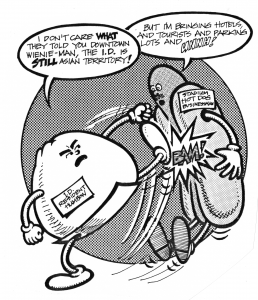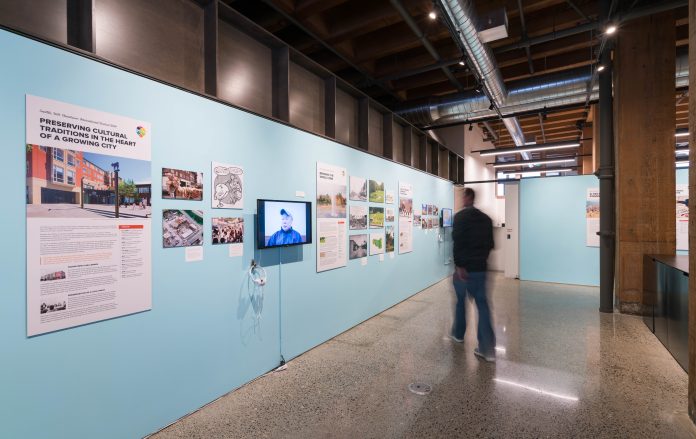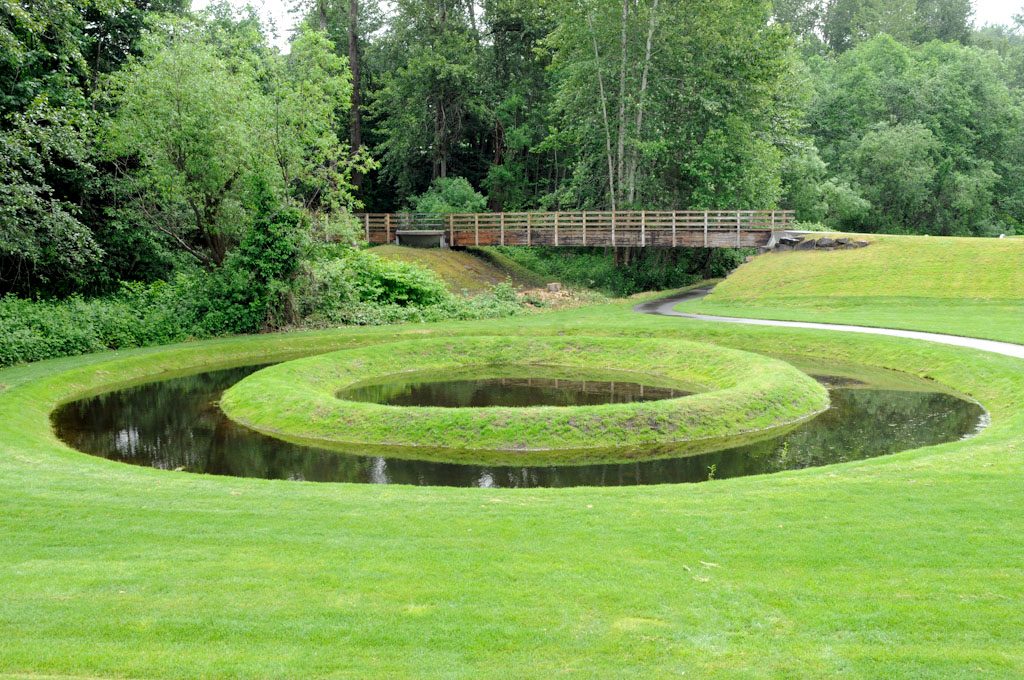In 1977, in the midst of the worst nationwide recession since World War II, the National Trust for Historic Preservation founded the Main Street Project, a three-year program to address dying downtown corridors across America, and develop a comprehensive revitalization strategy to save historic commercial buildings and districts. In 1980, the National Main Street Center, now Main Streets America, was formed.
Emphasizing the power of historic preservation as a tool for community-based revitalization of downtowns and commercial districts, the program has grown significantly over the last 35 years and currently works with hundreds of communities across the United States. A new Seattle exhibition takes a closer look at the preservation and revitalization efforts of a diverse selection of communities in an effort to glean possible solutions and ways forward for our own city.
Running through June 10th at the Center for Architecture & Design, Community by Design: Main Streets in a Changing America, curated by Jackie Peterson and presented by the Seattle Architecture Foundation, explores the Main Street America program through profiles of six communities which have utilized the program’s community driven transformation strategies.
By focusing on four key strategies that are part of the Main Street America program–economic vitality, design, promotion, and organization–communities in Main Streets in a Changing America have found successful ways to grow and thrive, while preserving what makes them unique, as cultures and economies, at a hyper-local scale. . Although not all of the communities featured in the exhibition are officially affiliated with the Main Streets program, all of them demonstrate how community members working together help keep their downtowns relevant.
Though the image of the dying main street in small town, rural America has almost become a cliché, the Main Streets America program is just as relevant to urban centers anxious to preserve the character of their neighborhood in the midst of our current urban population boom and the gentrification and displacement that so often accompany it.
Seattle’s own Chinatown-International District is a perfect example of an urban community doing just that. At the same time that the National Trust was exploring the possibilities of a Main Streets program, the C-ID was already using the principles of the program to preserve the character and communities in their neighborhood.
Largely in response to the proposed construction of the Kingdome, the C-ID was the site of massive community

activism, resulting in the establishment of the Seattle Chinatown-International District Preservation & Development Authority and the International District Special Review Board. Though the struggle for the soul of the neighborhood continues, C-ID has is a success story in how to leverage community energy and historic preservation as tools to preserve retail spaces and community resources for the Puget Sound’s large and diverse Asian immigrant population. The Chinatown-International District gained Main Street Affiliate status in 2016.
Slightly further afield, the city of Kent, WA has been an official Main Streets community since 1982, and it shows. With incredibly active community groups such as the Kent Downtown Partnership, the City has been able to leverage their historic and cultural resources to consistently improve downtown life for their diverse and growing population. One project in particular exemplifies the Main Streets design strategy–Mill Creek Canyon Earthworks Park.
Located in the Green River Valley, Kent experiences the flood and drought cycles typical of a river town, and in 1979 the new, community initiated Kent Arts Commission hired the Bauhaus artist Herbert Bayer to create a work of landscape art that functioned as both a public park and storm water retention facility. In 1982, Earthworks Park opened to the public. In 2008, the park was granted City Landmark Status, and underwent significant alterations to meet more stringent environmental standards. The Park now hosts frequent arts events, protects historic downtown Kent from annual flooding, and is a beloved local greenspace.
Downtown Kent and Seattle’s Chinatown-International District–like other community examples that are part of the Main Streets exhibition–show clearly how it only takes the passion and dedication of a small group of changemakers to preserve and revitalize places which are important to the fabric of our daily lives.
The identity of urban places is bound up both in their design and in the people who live in them. Part of the Main Streets exhibition’s goal is to encourage Seattleites to imagine their role in the future of local urban main streets.
Faced with a period of growth on a scale not seen since the Boeing Boom of mid-century, Seattle’s neighborhoods have been struggling to maintain a sense of identity. On June 1st, local urban diarist Chuck Wolfe is inviting Main Streets visitors to join him in using visual expression to get to the heart of what matters to them in changing local neighborhoods.
In his new book, Seeing the Better City, Wolfe details his urban diary technique, using close looking and photography from Seattle and international venues to see and understand our urban environment and how human experience intersects with the built world. Tonight, June 1st, Wolfe will present a brief talk at the Center for Architecture & Design, based on his book, followed by a walk through the surrounding neighborhood, demonstrating his urban diary techniques and inviting participants to begin their process to envisioning a better Seattle.
Community by Design: Main Streets in a Changing America is on view until June 10th at the Center for Architecture & Design, 1010 Western Avenue. Free and open to the public, Tuesday-Friday, 10am to 6pm; Saturday 1pm to 5pm. Visit: cfadseattle.org.
Kathryn Higgins is the Program Director for the Seattle Architecture Foundation (SAF), where she leads youth architecture workshops, creates community programming, and coordinates SAF’s exhibition program. She has lived in Seattle since 2005 and her favorite piece of local architecture is the KIRO 7 building.




